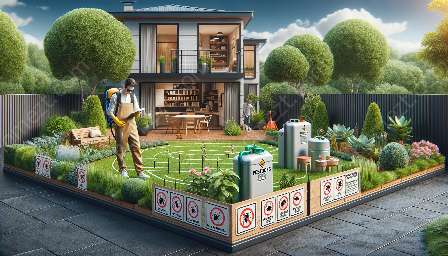As a parent, keeping your children safe at home is a top priority. Childproofing your home is a crucial step in maintaining a safe and secure environment for your little ones. However, it can be overwhelming to know where to start. In this comprehensive guide, we will cover tips and techniques for childproofing your home that are compatible with home safety & security and home & garden. By following these recommendations, you can create a safe and secure living space where your children can thrive.
Assessing Potential Hazards
Before embarking on the childproofing journey, it’s essential to identify potential hazards within your home. Start by getting down to a child’s eye level and looking for any dangers that may be within their reach. This includes sharp edges, choking hazards, toxic substances, and more. Make a list of potential hazards and prioritize them based on the level of risk they pose.
Securing Furniture and Appliances
Furniture and appliances pose a significant risk to young children, who may pull, climb, or bump into them. Use furniture straps to secure heavy items such as bookshelves and televisions to the wall. Additionally, install safety latches on drawers and cabinets to prevent children from accessing potentially dangerous items. Keep appliance cords out of reach, and use cord shorteners to minimize tripping hazards.
Installing Safety Gates and Locks
Staircases and areas with potential dangers, such as the kitchen, should be blocked off using safety gates. Make sure to choose gates that are sturdy and properly installed to withstand your child’s attempts to bypass them. Furthermore, install locks on doors, windows, and cabinets to restrict access to potentially hazardous areas and items.
Addressing Electrical and Fire Safety
Electrical outlets are enticing to young children, but they pose a significant risk of shock or burns. Use outlet covers to prevent access to live electrical outlets. Moreover, ensure that all smoke alarms and carbon monoxide detectors are in working order. Teach your children about fire safety and establish a fire escape plan with designated meeting points.
Organizing and Storing Hazardous Items
Many common household items, such as medications, cleaning products, and sharp objects, can be hazardous to children. Store these items out of reach in locked cabinets or high shelves. Additionally, consider childproofing your recycling and waste bins to prevent access to potentially dangerous items that children may try to explore.
Creatively Childproofing in the Garden
When considering child safety and security in the context of home & garden, it’s important to extend your childproofing efforts to outdoor spaces. Secure fencing around pools and ponds, remove poisonous plants, and eliminate potential tripping hazards such as loose paving stones or garden tools. Designate a play area with appropriate safety surfacing to minimize the risk of injuries during outdoor play.
Continuous Supervision and Education
While childproofing is essential, it’s equally important to supervise your children at all times, especially in new environments. Educate your children about the potential dangers in the home and teach them about safety rules. Creating a safe and secure environment involves a combination of physical modifications and education to help children understand and avoid potential hazards.
Maintaining a Safe and Secure Environment
Regularly reassess and update your childproofing measures as your children grow and develop new skills. Stay informed about new safety recommendations and products in the market to ensure that your home remains a safe and secure environment for your family. By being proactive and diligent in your childproofing efforts, you can provide your children with the freedom to explore and play while minimizing the risk of accidents and injuries.


































